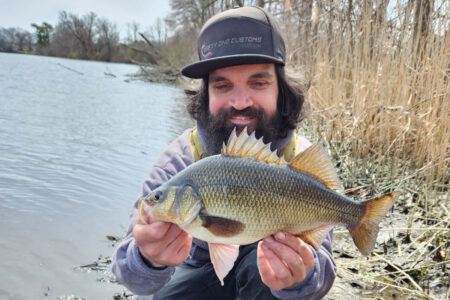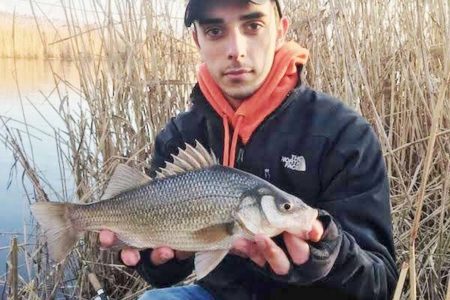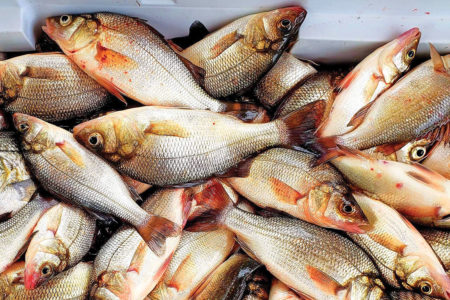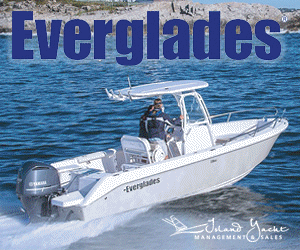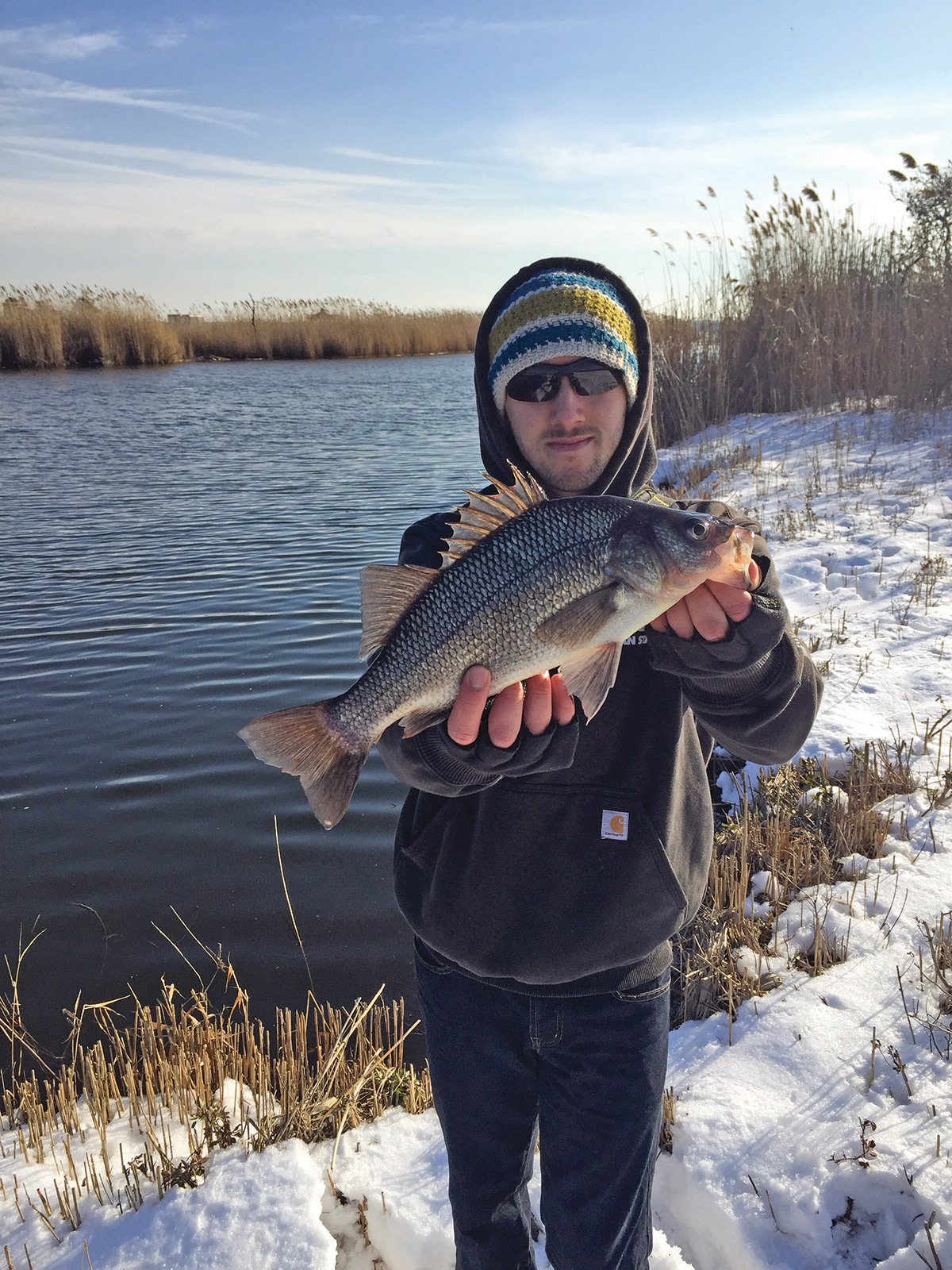
With the ending of striped bass season most anglers take advantage of this time to tinker with gear, tend to rod and reel repair, and attend local flea markets and outdoor shows. For some of us, the urge to bend a rod remains strong during the long, drawn out winter months. What better fish to target than a close relative of the striped bass, the white perch. I try to look at fishing for white perch in a similar way that I fish for stripers, but in a scaled down version. White perch will max out at a little bit over 3 pounds, but they fight well and are a scrappy adversary on the appropriate tackle.
What is appropriate tackle? I would suggest a light or ultra-light graphite rod in the 5-1/2- to 6-foot range. A matching spinning reel with a smooth drag, spooled with 2- to 6-pound test monofilament rounds out the ideal outfit. You’re probably wondering why I’m suggesting monofilament over braid for this type of fishing? Whether to use braid or mono is a personal choice, but I have found that for this type of fishing, where I am using very light lures and jigs, I tend to get less tangles with light mono as opposed to braid.
There are several methods that can be applied when targeting white perch, and all can be effective at some point during the season. There are a number of different baits that can be used to entice trophy sized perch, but there are times when artificials can be equally effective, among them, soft plastics, spoons, jigs and swimming plugs.
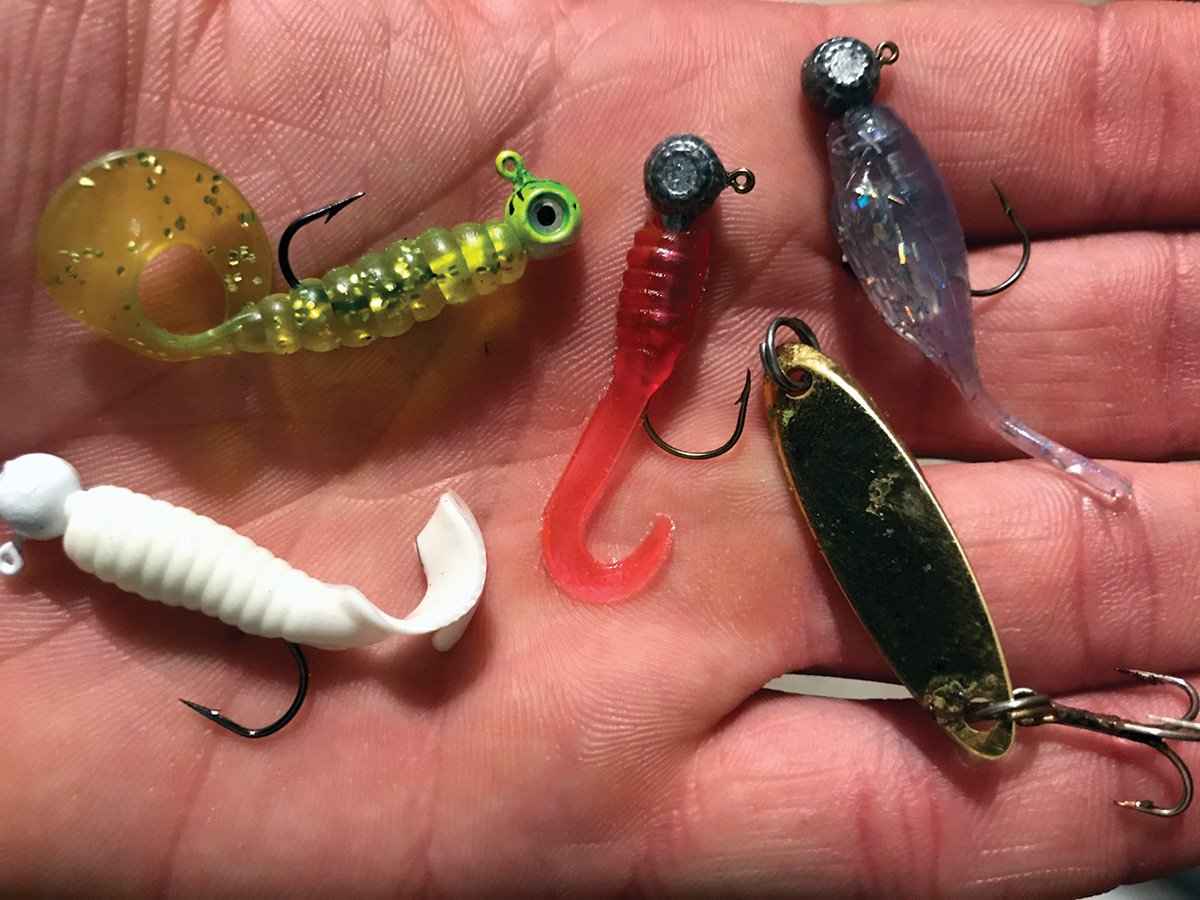
My number one bait for perch will always be nightcrawlers due to the fact that you can pick them up at almost any bait and tackle shop throughout the year. Aside from the fact that they are easy to get, they are a great bait for white perch. Typically I start by breaking up a whole large nightcrawler in quarter pieces. You can choose to fish them either a few feet under a float or with a couple of split shots on the bottom. Standard for me is a size 6 hook but I adjust accordingly to a smaller or possibly a larger size depending on the size of the fish that I am catching.
A killer bait for white perch, but not always as easy to get a hold of, is grass shrimp. Shrimp are to perch as eels are to striped bass. One common method for catching grass shrimp is taking a very fine mesh minnow net and running it along tidal creek bulkheads and docks. You can typically get a good amount of them if they are around. A simple bucket and air pump will keep them lively until you use them. I use them the same way I use nightcrawlers. Be careful hooking them though as they are delicate and usually fall off after an initial strike from a perch. I’ve also done well with better sized perch catching and using minnows. A minnow trap does a great job at catching them. The only disadvantage is that you may have to leave a trap overnight to get a sufficient amount of bait, although the reward could well be worth it.
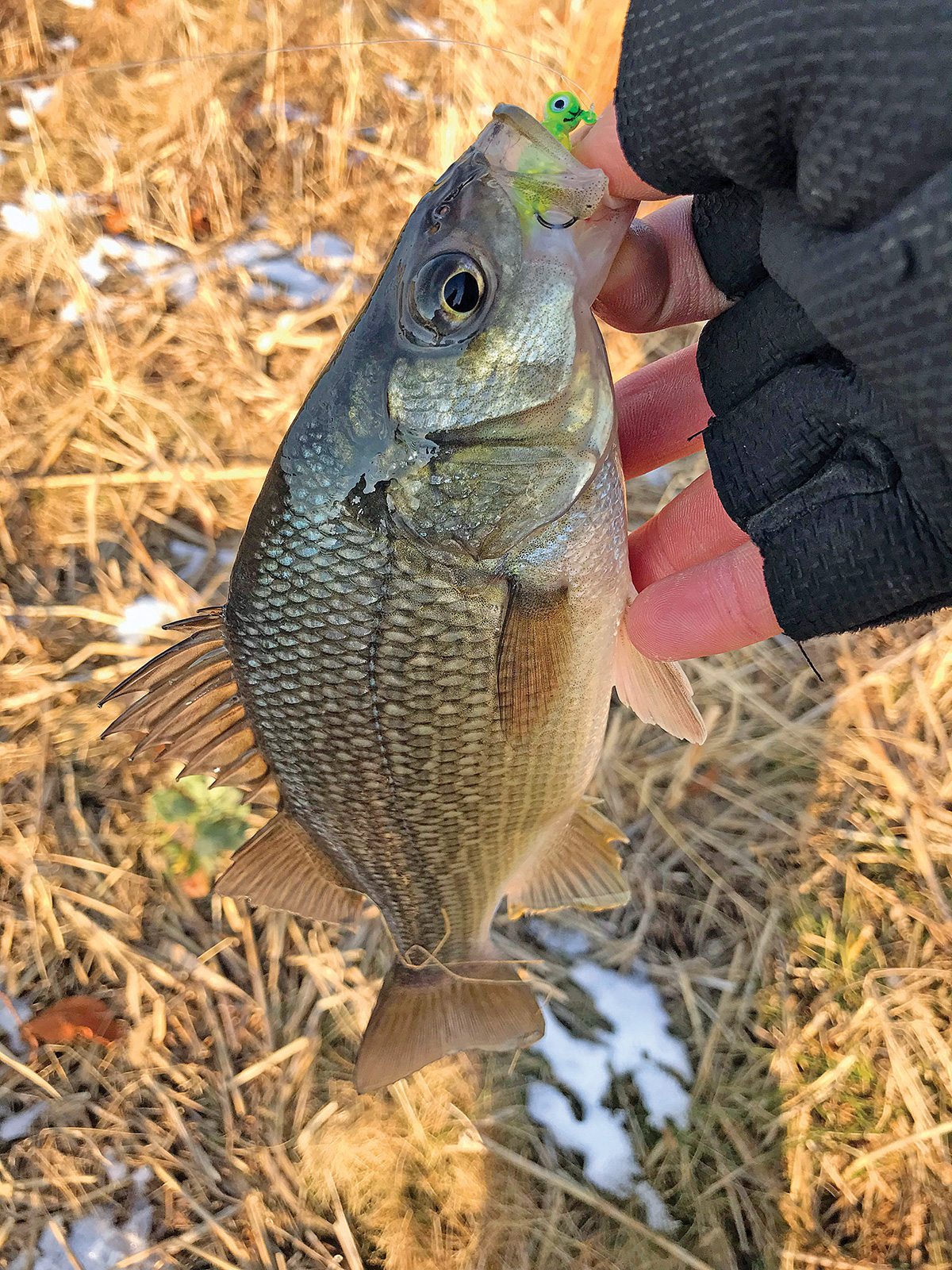
In addition to these baits, many different soft plastics and lures can be used successfully for white perch. Twister tails are one of my go to soft baits, but small Fin-S plastics, Bass Assassins and tiny swim shads can also be very effective. The best artificials are those from 1 to 2 inches in length. I find that with anything larger I start to miss too many fish. So many colors are available to try, but my suggestion is to keep it simple. Carry white, yellow, chartreuse and brown. I’ve had good luck with all these colors and if they are less active on one of them, any of the others will tend to get more interest. As far as jig head sizes, it really depends on the conditions. Factor in the current, wind, and water depth. I carry an array of sizes, including 1/32, 1/16, 1/8, and 1/4 ounce. These cover all scenarios you are likely to encounter. Tiny jigs, especially those tied with marabou are also effective on perch, as are midget size swimming plugs like Yo-Zuri’s smallest Pin Minnow.
If you like using metal lures, small Kastmaster or Phoebe spoons worked with twitches close to the bottom are hard for a white perch to resist. Simply tying direct with an improved clinch knot is all that is necessary for this type of fishing. Keep it simple.
Now that you have an idea of what to bring with you on your hunt for white perch, the next question would be what locations to target or focus on. White perch can live in both freshwater as well as brackish water. Most of my white perch fishing is done in brackish waters where the abundance of food results in generally better quality fish. Almost any creek, river or pond with saltwater feeding into it has potential for some outstanding white perch fishing. Locating the schools is the key. The fishing can be nonstop once you do. They may be sitting on a drop-off, clinging to structure, or even just following baitfish with the tide.
While some anglers will target white perch for their fighting qualities on light tackle, others target them for their excellent eating quality, and with good reason. They are a white meat fish with few bones. You can cook them several different ways, but when I decide to keep a few for dinner I will season the fillets with salt, pepper and dredge them in Panko breadcrumbs. Bake at 425 degrees until the meat flakes easily with a fork. They are one of my favorite fish to eat.
| WHERE TO FIND WHITE PERCH |
|---|
| Otter Pond – Sag Harbor Carmans River – Yaphank Browns River – Sayville Tuthill Creek – Patchogue Connetquot River – Oakdale Santapogue Creek- West Babylon Nissequogue River – Smithtown |
